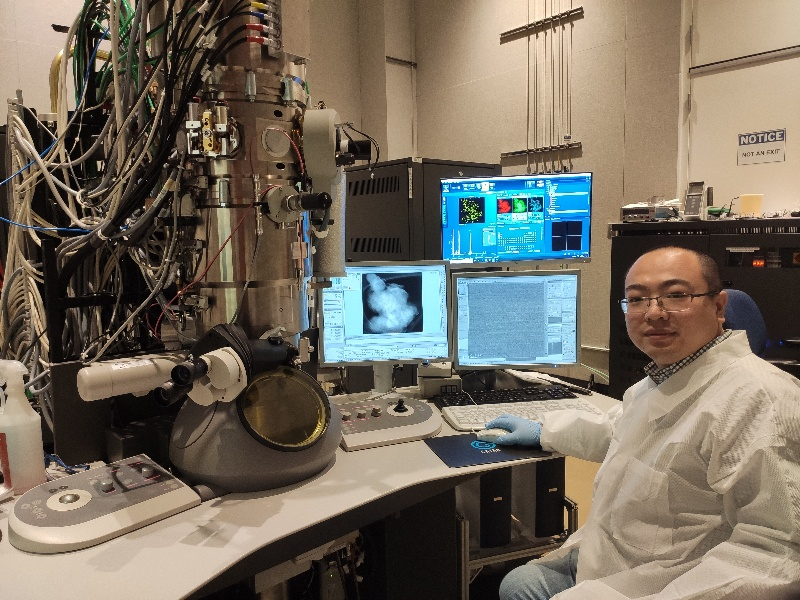Discoveries in Iron Ore Formation Unveil Important Fundamentals in Creation of New Materials
Researchers use EMSL instruments to unveil new details of hematite formation

Understanding how minerals crystallize and bond in various conditions provides important insights into predicting and controlling their development. It also provides crucial fundamental information for the creation of new materials.
Recently, researchers at Pacific Northwest National Laboratory used a series of instruments and techniques at the Environmental Molecular Sciences Laboratory to help reveal how a type of iron ore develops and binds together via a specific type of crystallization called oriented attachment. Essentially, it forms one-dimensional particle chains that are independent of the material’s original form, shape, and facet, also known as particle morphology.
Specifically at extremely high temperatures in water, nanocrystals of a type of iron ore called hematite change shape to expose what is called the 001 facet, a directional face along the mineral, which aligns to form one-dimensional particle chains. It binds via a precise alignment of particle faces at very small distances, said Xin Zhang, scientist at PNNL. Unlike the classical crystal growth pathway where crystals form by attaching single monomers such as atoms, ions, and molecules, crystallization via oriented attachment is a process in which nanocrystals align their atomic lattices, attach together, and grow into a single crystal.

“Oriented attachment is a particularly challenging phenomenon to study because it occurs under specific conditions and involves precise alignment of particle faces,” Zhang said. “There is still a lot we don’t know about how it occurs. But these findings help provide a greater level of detail regarding this type of crystallization, and in turn, how materials are naturally created and how they can be artificially created in the future.”
Zhang said understanding how these minerals form will help unveil the building blocks for the development and creation of other types of materials that are useful and needed in everyday life. He said this knowledge is useful in the creation of products for industries such as energy, catalysis, biomedicine, electronics, and magnetics, to name a few.
The reason the team is specifically studying hematite and how it bonds, Zhang said, is because it is widely available in nature.
“You can find it almost anywhere on Earth,” he said. “It is also a material that is used in a variety of industries and for a variety of purposes,” he said. “We can use it as a base model in the study and development of other minerals and materials.”
Zhang said they are still early in their research. So far, he said his team has tried to understand the particle aggregation of hematite that is most important in understanding the natural phenomenon of how it is formed. They look to build on their research to understand the effect of organics on particle aggregation. He hopes his team’s findings will be useful in the formation of future bio-based and other man-made products. The team’s findings, he said, will also be helpful in the study of environmental transformations in nature.
The team’s findings were recently published in the Proceedings of the National Academy of Sciences (PNAS).
For their research, the team used a range of instruments at EMSL, of which some include scanning electron microscopy, transmission electron microscopy, X-ray diffraction spectrometry, and computation resources.

